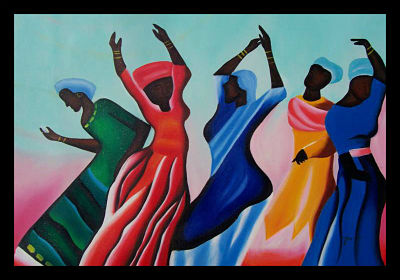How African Artists Broke Through the Global Art World

African art sells for modest amounts in comparison to other contemporary works of art, so why are international collectors and enthusiasts racing to secure as much of it as they can? If worldwide critical acclaim and prestigious awards are any indications, African art could become a profitable investment.
With the South African country of Angola taking the Golden Lion award for best national participation at the Venice Biennale art exhibit, African art has generated extraordinary buzz amongst curators and collectors. The Bonham auction house in London holds the only annual sale dedicated to African art, and the house’s website notes that there has been “an explosion of interest” in recent years for the artwork.
“Created by artists from a multitude of cultures,” the site explains, “African contemporary art reflects the complex heritage of this dynamic continent and demonstrates tremendous potential for investment.”
El Anatsui, a Ghanaian sculptor and teacher at the University of Nigeria, is among the acclaimed African artists whose work has generated such enthusiasm. Channeling his Ghana heritage, many of his works incorporate either clay or wood in conjunction with local goods from his culture, such as Igbo palm mortars and Ghanaian trays. Some of his famous works blend common items together to form monumental and fluid sculptures. For example, his 2007 sculpture “Dusasa II” is a 361.6 lb melding of plastic disks, aluminum, and copper wire. One of his most recent works, “TISA-TISA—Searching for Connection,” was entirely constructed using recycled materials.
El Anatsui’s work is currently featured in museums such as the Brooklyn Museum in New York and the British Museum in London. He has also created a wall-hanging sculpture for the Royal Academy in London after receiving an invitation to the establishment. In an interview with Gulf News, El Anatsui explained how art has always existed as expression of cultures such as his, and it’s thanks to advances in modern communications that awareness of other cultures has increased.
Angolan photographer Edson Chagas has also garnered international attention after his showpiece Found Not Taken allowed his home country to take the Golden Lion award. A documentary and commentary on consumerism and capitalism, Found Not Taken compiles years of photos taken in Luanda: the city Chagas was born. Although he studied photography in London, he always intended to continue his projects from his home country. Chagas hopes the award will spark more interest in both his work and the art of other Angolan artists.
This increased exposure has allowed Cameroonian curator Koyo Kouoh to secure funding in London for a contemporary African art fair. She notes that African artists are using their art to “promote their country,” and the international focus on countries such as Angola is “not just on war anymore.” Modern art plays an important role in the common perception of cultures and societies, so Africa’s rising popularity will increase awareness of the continent’s triumphs and struggles on a global scale. With economies on the rise in many of Africa’s countries, citizens such as Chagas hopes their governments will take this opportunity to provide stronger education in the arts to train a new generation of artists.
– Timothy Monbleau
Sources: BBC, BBC Economy on the Rise,
Bonhams, Poetics of Line, Golden Lion Award, Metropolitan Museum of Art The British Museum, Gulf News, Tree Hugger, Contemporary And
Photo: skunkandraven
